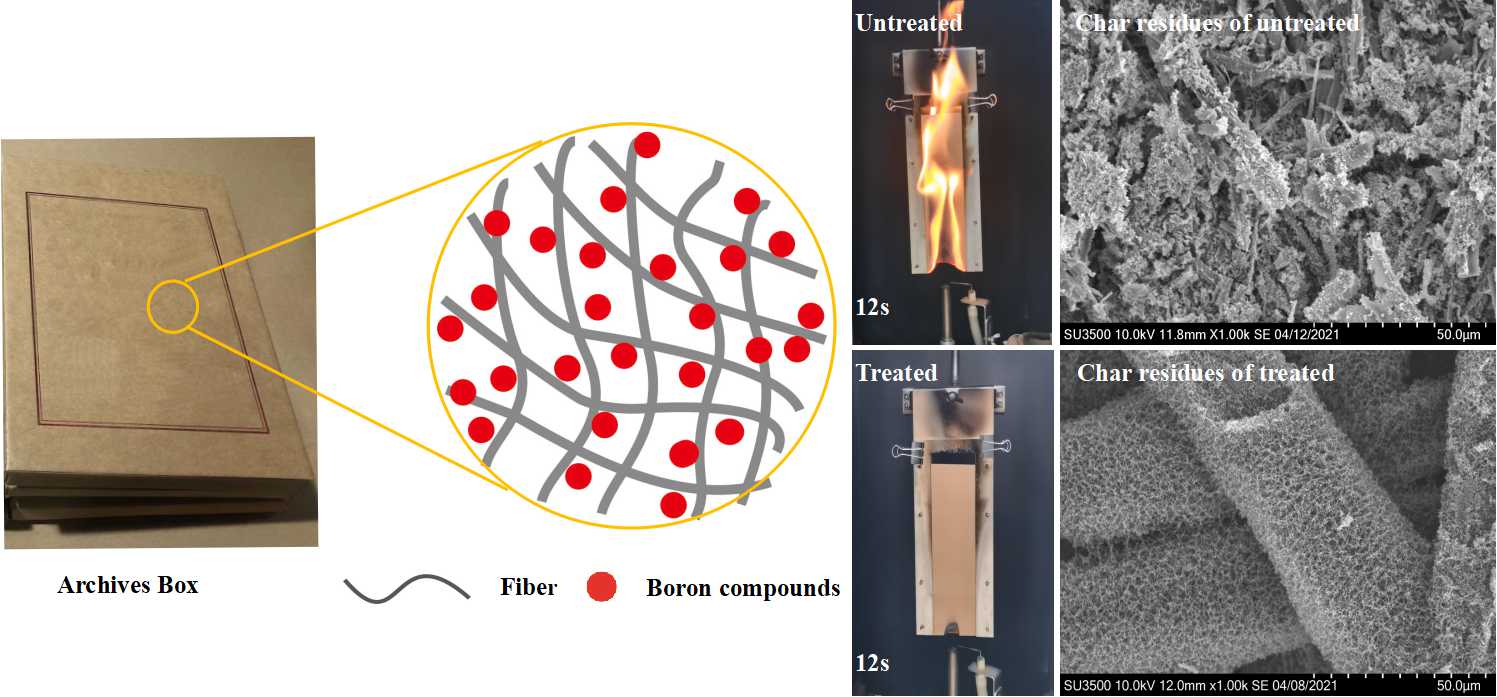 Open Access
Open Access
ARTICLE
Borate-Modified, Flame-Retardant Paper Packaging Materials for Archive Conservation
1 Engineering Research Center of Historical and Cultural Heritage Protection, Ministry of Education, School of Materials Science and Engineering, Shaanxi Normal University, Xi’an, 710119, China
2 Ningbo University of Finance & Economics, Ningbo, 315175, China
* Corresponding Authors: Yuhu Li. Email: ; Jing Cao. Email:
(This article belongs to the Special Issue: Bio-based Halogen-free Flame Retardant Polymeric Materials)
Journal of Renewable Materials 2022, 10(4), 1125-1136. https://doi.org/10.32604/jrm.2022.018147
Received 02 July 2021; Accepted 31 August 2021; Issue published 02 November 2021
Abstract
Paper packaging materials like cardboards are widely used to protect archives which are a major kind of cultural relics. Unfortunately, paper is a combustible material, and thus exploring environment-friendly flame retardant for paper-based archive packaging material plays an important role. Herein, boric acid, borax and disodium octaborate are used to modify the craft paper-based packaging materials for archive conservation to improve fire safety. The modified craft paper exhibits much higher flame retardancy than the pristine one dose based on vertical burning tests, without much influence on mechanical properties such as tensile strength and elongation at break. Thermogravimetric analysis (TGA), scanning electron microscope (SEM), and X-ray photoelectron spectroscopy (XPS) reveal that porous glass structure is formed during the combustion, because thermal decomposition of boric acid, borax and disodium octaborate will produce porous glassy matter as B2O3. The porous glass covers the paper surface as an insulating layer which retards the further pyrolysis and combustion, resulting in a denser carbon layer. Our study provides a robust way to reduce the fire hazard of the archive packaging material by applying environment-friendly boron-based fire retardants.Graphic Abstract

Keywords
Cite This Article
Citations
 Copyright © 2022 The Author(s). Published by Tech Science Press.
Copyright © 2022 The Author(s). Published by Tech Science Press.This work is licensed under a Creative Commons Attribution 4.0 International License , which permits unrestricted use, distribution, and reproduction in any medium, provided the original work is properly cited.


 Submit a Paper
Submit a Paper Propose a Special lssue
Propose a Special lssue View Full Text
View Full Text Download PDF
Download PDF

 Downloads
Downloads
 Citation Tools
Citation Tools